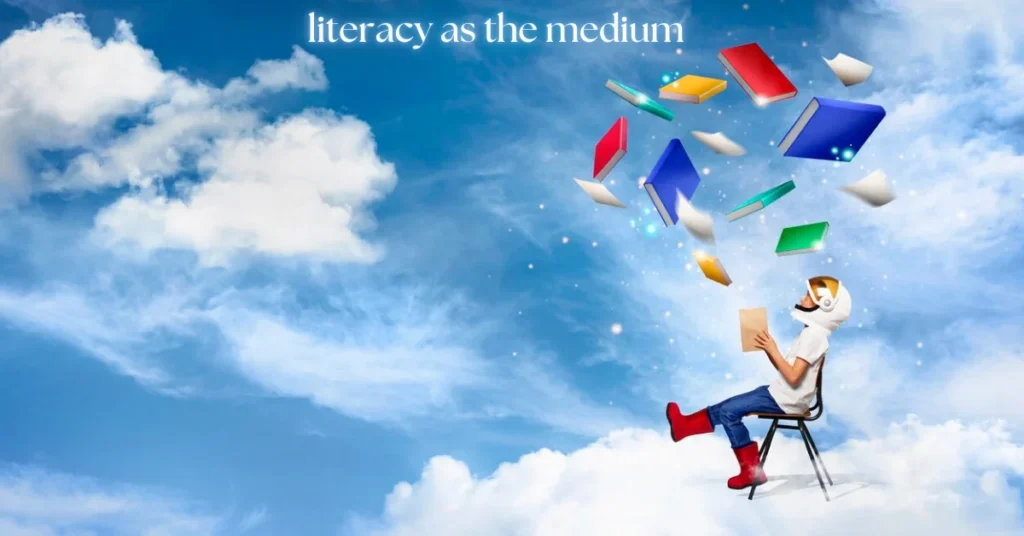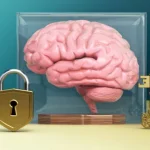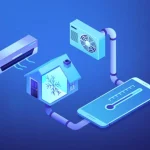Introduction to literacy as the medium
Literacy is often viewed through a narrow lens, primarily focusing on the ability to read and write. But what if we told you that literacy goes far beyond just words on a page? In today’s fast-paced world, our understanding of literacy must evolve to include visual and digital communication as vital forms of expression. From social media posts that convey powerful messages in an instant to the intricate designs that tell stories without uttering a single word—this new landscape invites us to explore how various mediums shape our understanding and interaction with information. Join us on this enlightening journey as we redefine literacy as the medium for connecting with one another in innovative ways.
The traditional understanding of literacy
Traditionally, literacy has been defined as the ability to read and write. This foundational skill forms the bedrock of education and communication in society. It empowers individuals to navigate printed materials, allowing them to access information and express thoughts.
Historically, literacy was a privilege afforded primarily to those with access to educational resources. As a result, it often reflected social hierarchies and divisions.
In schools, reading comprehension and writing proficiency were emphasized heavily. Students learned grammar rules, vocabulary lists, and analysis techniques that prepared them for academic success.
However, this narrow definition overlooks other essential modes of understanding our world. While reading and writing remain crucial skills today, they represent only one aspect of a much broader landscape of communication tools available in our increasingly visual and digital age.
The limitations of traditional literacy
Traditional literacy has long been defined by the ability to read and write text. While this foundation is crucial, it often overlooks other essential skills.
For instance, many individuals can decode words but struggle with interpreting graphics or visual data. Ignoring these aspects can leave gaps in understanding complex subjects.
Moreover, traditional literacy doesn’t account for digital communication. In a world dominated by screens, proficiency in typing isn’t enough. Understanding emojis, memes, and videos as forms of expression is equally important.
Cultural context also plays a significant role in comprehension but is frequently sidelined in standard literacy frameworks. This results in barriers that prevent effective communication across diverse communities.
Such limitations highlight the need for a broader perspective on what it means to be literate today—one that encompasses various modes of information exchange beyond just written text.
ALSO READ: Aviyne .com: Simplifying Your Life with Smart Digital Solutions
Expanding beyond words: incorporating visual and digital literacies
As we navigate an increasingly complex world, the definition of literacy is evolving. It’s no longer confined to reading and writing alone. Visual literacy has emerged as a vital component. Understanding images, symbols, and design elements shapes how we communicate today.
Digital literacies are equally crucial in this landscape. From social media posts to online articles, recognizing context and intent becomes essential for meaningful engagement. The ability to interpret data visualizations or multimedia presentations adds another layer.
Incorporating these forms of literacy invites creativity into our communication styles. It encourages us to think critically about the messages we consume and produce.
By embracing visual and digital aspects, learners become more adaptable. They can express ideas through diverse formats that resonate with varied audiences in ways text alone cannot achieve.
Examples of non-traditional literacy in everyday life
Non-traditional literacy is all around us, often in unexpected forms. Consider the world of social media; platforms like Instagram and TikTok require users to convey messages through visuals, emojis, and short videos. Here, creativity meets communication.
Graphic design has become a vital skill as businesses rely on eye-catching visuals to engage audiences. A well-crafted infographic can tell a complex story without relying solely on text.
Think about gaming too. Many video games incorporate intricate narratives that players must navigate using critical thinking and problem-solving skills. This form of interactive storytelling enhances engagement in ways traditional reading cannot replicate.
Even food packaging requires an understanding of symbols and colors that communicate nutritional information instantly. These examples show just how diverse literacy has become in our daily lives.
ALSO READ: BL_Faceless: The Power of Anonymity in Digital Creation
Benefits of embracing a multi-dimensional approach to literacy
Embracing a multi-dimensional approach to literacy opens up new avenues for understanding and communication. It allows individuals to engage with information in richer, more meaningful ways.
By integrating visual and digital literacies, learners develop critical thinking skills. They analyze images, videos, infographics, and interactive media alongside traditional texts. This fosters creativity and innovation.
Furthermore, diverse literacy forms cater to different learning styles. Some people grasp concepts better through visuals than through words alone. When education incorporates various mediums, it becomes inclusive for everyone.
Additionally, this holistic view of literacy prepares individuals for today’s fast-paced world. In an age dominated by technology and multimedia content, being adept at navigating these formats is essential.
Expanding our definition of literacy cultivates adaptability—an invaluable trait in both personal and professional arenas. Embracing multiple dimensions enriches lives while empowering communities as a whole.
Challenges and criticisms
As we explore literacy as the medium, it’s essential to address the challenges and criticisms surrounding this broader concept. One major concern is the risk of diluting traditional literacy skills. Critics argue that if we focus too much on visual or digital literacies, foundational reading and writing might suffer.
Another point of contention involves accessibility. Not everyone has equal access to technology or resources necessary for developing these new literacies. This disparity can widen existing gaps in education and opportunities.
Additionally, some skeptics question whether incorporating various literacies truly enhances understanding or simply adds complexity. They worry that without a strong grounding in basic literacy skills, individuals may struggle with comprehension across different mediums.
These challenges highlight an ongoing debate about what constitutes effective literacy education in our rapidly evolving world.
Conclusion: the importance of promoting diverse forms of literacy in society
Promoting diverse forms of literacy in society is essential for fostering an inclusive and informed community. As we embrace the notion that literacy extends beyond traditional reading and writing, we open up a world of possibilities. A multi-dimensional approach empowers individuals to navigate complex information landscapes, from digital media to visual communications.
Recognizing various literacies enriches education and personal development. It encourages creativity, critical thinking, and adaptability—skills vital for thriving in today’s fast-paced world. By valuing all forms of expression and understanding, we cultivate a culture where everyone can contribute meaningfully.
Encouraging this broader perspective on literacy not only enhances individual capabilities but also strengthens societal cohesion. Embracing diversity in communication methods deepens our connections with one another, promoting empathy and collaboration across different backgrounds.
In a rapidly evolving landscape filled with varied modes of expression, it’s crucial to champion all aspects of literacy as the medium through which we engage with the world around us. The journey toward comprehensive literacy is ongoing; let’s commit to supporting each other along the way.
ALSO READ: Sowix Online: Transforming the Digital Experience
FAQs
What is “literacy as the medium”?
“Literacy as the medium” expands the definition of literacy beyond reading and writing to include various forms of communication, such as visual, digital, and multimedia. It recognizes that understanding and interacting with symbols, images, and digital content are essential to modern communication.
Why is traditional literacy no longer enough?
Traditional literacy, focused on reading and writing, doesn’t account for the growing importance of visual and digital communication. In today’s world, interpreting graphics, videos, and emojis is just as important as understanding written text.
How does visual literacy impact communication?
Visual literacy is crucial for understanding images, symbols, and design elements in our media-heavy world. It enhances how we interpret advertisements, infographics, social media posts, and other visual forms of communication that convey meaning without words.
What are some examples of non-traditional literacy?
Non-traditional literacies include the ability to understand and create social media content, interpret video game narratives, analyze infographics, and even decode the symbolism in food packaging. These forms of literacy shape how we consume and share information daily.
What are the challenges of embracing a broader definition of literacy?
Challenges include concerns over diluting traditional reading and writing skills, disparities in access to technology, and the complexity of mastering multiple forms of communication. Critics also question whether expanding literacy truly enhances understanding or adds unnecessary complexity.







